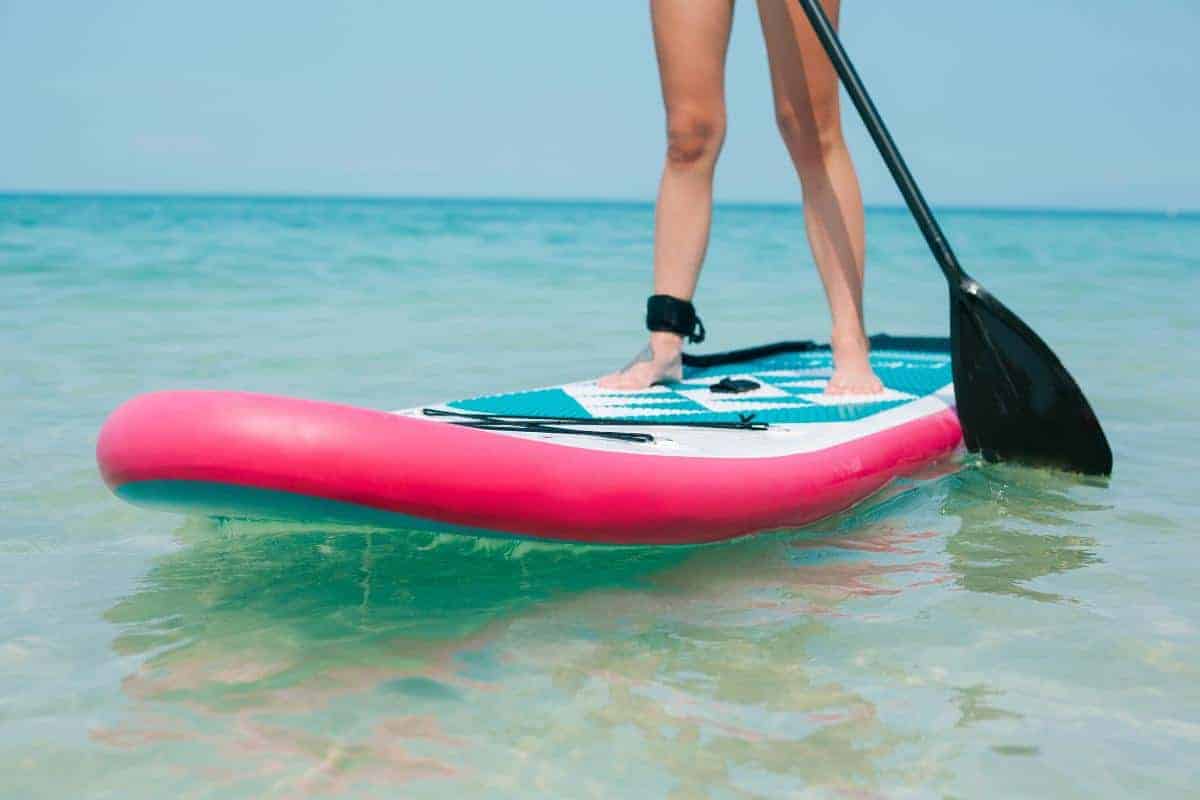A beginner’s guide to paddleboarding on your next beach holiday
This is a collaborative post.
You’ve probably seen people gliding over the water, standing tall on boards, and thought, “That looks like fun”. Maybe you’ve even been tempted to try paddleboarding yourself. The truth is, it’s not as daunting as it seems, and once you’re out there, it’s hard not to feel like you’ve unlocked a whole new level of freedom on the water.

What is paddleboarding?
Paddleboarding involves standing on a large, stable board (like a bigger surfboard) while using a paddle to propel yourself across the water. It’s surprisingly straightforward. The board’s size and shape keep you balanced, and with the right technique, you can easily glide through calm waters or take on a bit of a wave if you’re feeling bold.
Whether you’re on a serene lake or along the coastline, the idea is that you’re in control of your pace and direction. It’s an ideal way to take in the beauty of the water and your surroundings, all while getting a surprisingly good workout.
What should I pack for paddleboarding?
There are a few essentials you’ll need. First, bring a swimsuit (which you probably already have) and/or some comfortable activewear. Avoid anything too loose; water-friendly gear usually works best. Next, if you need to take your belongings with you, grab a dry bag for your phone, keys, sunscreen and other items. You don’t want soggy phone alerts ruining your zen moment.
Boards and paddles can usually be rented on-site, though you might want to bring your own if you’re planning to get serious about the sport. Make sure your paddle is lightweight and suitable for your height.
Footwear isn’t essential, but if you’re paddling in rocky or unfamiliar waters, consider water shoes to protect your feet. And don’t forget a hat or sunglasses to protect you from a sunburn.
Where and when to paddleboard on your beach holiday
If you can, go for calm waters with little wind, like coves or quiet bays. These areas are ideal for beginners because the conditions are more predictable and less likely to throw you off balance. If you’re on a beach holiday, you can usually find a place to rent equipment or even take a lesson.
The best time to paddleboard is usually early in the morning or late afternoon. The water tends to be calmer, and the sun’s not as intense. Plus, the golden light of dawn or dusk can make your session feel almost cinematic.
Tips for your first time
Here’s the thing: your first time out on the board might feel awkward. Start by kneeling on the board. Once you’re comfortable, slowly stand up, keeping your feet shoulder-width apart. Stay centred and try to keep your knees slightly bent; that’s the sweet spot for balance.
Use the paddle to push yourself forward, alternating strokes on each side of the board. Don’t overcomplicate it and just paddle gently; you’ll build a rhythm. If you do fall off (and you probably will), don’t panic. It’s part of the fun. Try to fall away from the board and keep your arms up to avoid hitting yourself.
Soon enough, you’ll be gliding like a pro.
Have you ever tried paddleboarding? Is it something you would like to do? I know, as a non-swimmer, there is no way on earth I would go paddleboarding, but I can see it looks fun to people who aren’t as scared of the water! I guess it is one of those newer sports that were not really around when I was a kid, either, or maybe it was, and I was oblivious? Let me know your thoughts on paddleboarding in the comments below.